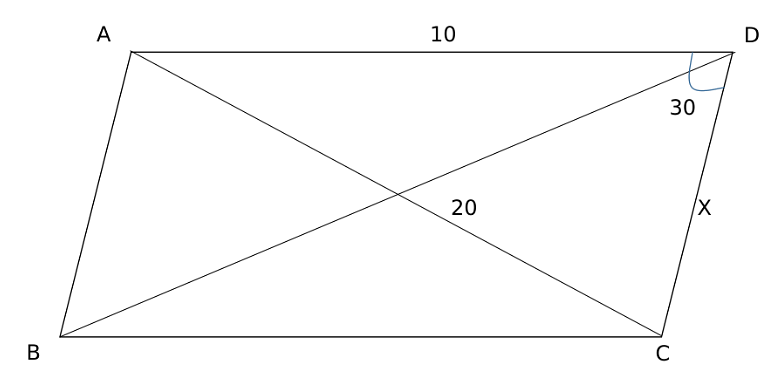Question
Quantitative Aptitude Question on Geometry
Let ABCD be a parallelogram. The lengths of the side AD and the diagonal AC are 10 cm and 20 cm, respectively. If the angle ∠ADC is equal to 30° then the area of the parallelogram, in sq. cm, is
A
225(3+15)
B
25(5+15)
C
225(5+15)
D
25(3+15)
Answer
25(3+15)
Explanation
Solution

Applying cosine rule in triangle ACD
100+X2−2×10×Xcos30=400
X2−10X3−300=0
⇒X=(2103+1015)
X is the length of one of the sides of the parallelogram, hence it can’t be negative.
∴area=10Xsin30=2(2103+1015)10
=25(3+15)
